A Sailing Barge For Women, By Women
The Bread and Roses Barge Breathes New Life into a Traditional English Sailing Barge, Carving Out a Space for Women Where There Hadn't Been One Before
On a cold February day, muffled chatter and the sounds of swinging hammers fill the St. Osyth Boatyard. Midway down the dock, a hundred-and-thirty-two-year-old piece of history sits bobbing beneath the sheen of a clear plastic tarp.
Inside its hold, women are hard at work.
Wielding crowbars and drills, they pry free worn planks, strip back greasy screws, and expose the bones of this hulking ship—all in preparation for the vessel’s new life as The Bread and Roses Barge, an onboard community space built for women, by women.

The Bread and Roses Barge, a female-led English Community Interest Company, is dedicated to restoring S.B. May, the oldest surviving Essex Thames sailing barge. Its goal is not only to breathe new life into May but to transform her into a resource hub and eventually a floating bakery that uplifts vulnerable women across East Anglia.
“We want to give women a voice and a space to be supported and nurtured,” emphasizes Jane Harman, Co-Founder of The Bread and Roses Barge.
Many boats of May's age qualify as heritage vessels, making them eligible for funding from historical trusts. Often, with the assistance of grants, these boats are converted into training ships or transformed into restaurants.
Never before has a renovation like this specifically catered to the needs of present-day women — a group that has traditionally been unwelcome and overlooked in the male-dominated history of English canals.
“This has historically been a man’s world, a man’s vessel despite the many women who have been connected to her over the last 132 years,” says Harman. “We aim to address that.”
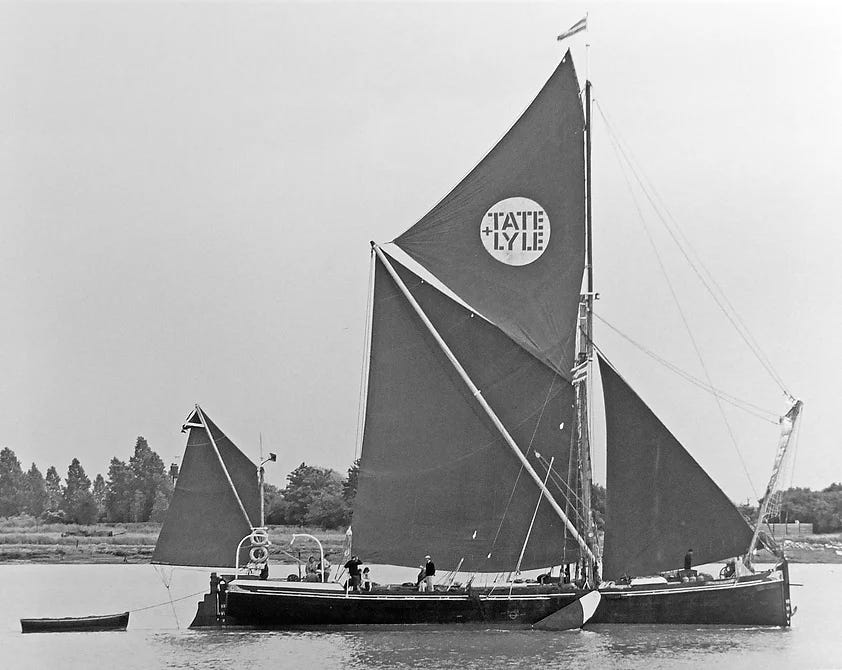
S.B. May has, in many ways, become a literal vessel through which The Bread and Roses Barge is reshaping the nautical community's narrative of the past and present.
The three women behind the project couldn't be more suited for the job.
Helen Swift, Jane Harman, and Connie Gadd are no strangers to boat restorations. Swift and Harman have restored numerous English sailing barges, and have been deeply involved in the maritime community for several decades.
Harman, in addition to leading May's restoration efforts, also serves as the first and only female Chairperson of England’s Sailing Barge Association. She co-owns and manages the St. Osyth Boatyard with her husband. And, having spent her formative years in Maldon, England, surrounded by fishing smacks, barges, and traditional boats, she has long been aware of the absence of women on the water.
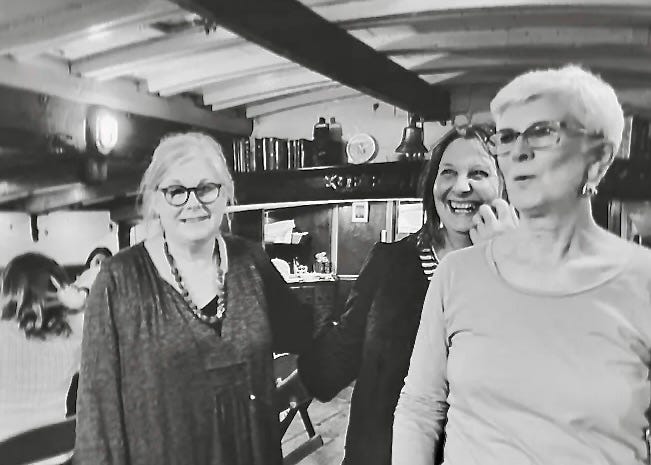
That’s exactly why, when The Bread and Roses Project was first proposed, Harman was immediately interested: “Too many barges have been lost, and those that remain need protection. This project is vitally important as it involves women in what has traditionally been very much a man's world.”
Connie Gadd, a Bread and Roses co-founder and former owner of S.B. May, was onboard the vessel whenever possible. Her husband, Gerald, worked as a skipper for the Tate and Lyle company, which used May to transport goods under sail. Gerald's work frequently took him and Connie on journeys along the River Thames and across the coastlines of the UK and Europe. Eventually, when Tate and Lyle had no further use for May, the barge came into the couple's hands.
When Gerald passed away in 2020, the question of what to do with the rapidly aging barge became paramount. Gadd, Harman, and Swift recognized that they would need a sizable amount of cash to restore May to her former glory.
“The idea came from Helen: her experience with the rebuild of Sailing Barge Dawn gave her the insight to understand that in order to secure significant funding, May needed a clear purpose,” recalls Harman.
And that purpose, to support vulnerable women onboard May, quickly gained traction.
With backing from a variety of donations, The Bread and Roses Barge has already begun fulfilling its mission. The organization now hosts intimate workshops and teach-ins below deck, all tailored to the needs of local women.
From menopause support sessions to career training, splicing workshops, and breast cancer fundraisers, The Bread and Roses Barge has been rather busy these past few years. The design of May can be partly credited for the repeated success of these events.
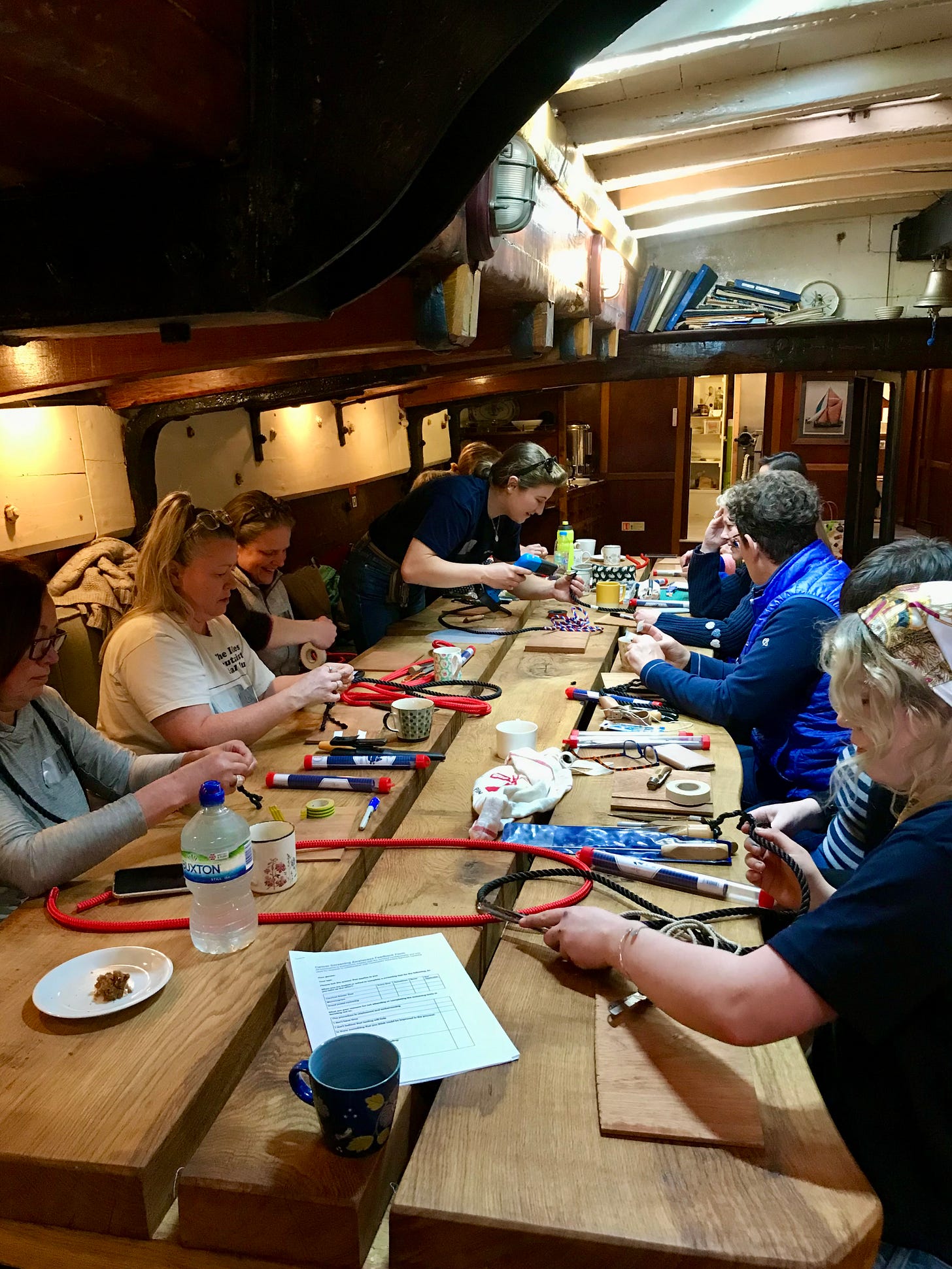
Built to transport large quantities of cargo through shallow estuaries and rivers, English sailing barges typically feature spacious interior holds and flat-bottomed hulls, providing ample space for people to gather comfortably inside. This spacious interior structure is conducive to many of the tough discussions that the organization tackles onboard.
“Many find it a safe, cozy, and homely space. Conversations flow about lives and experiences,” points out Harman.
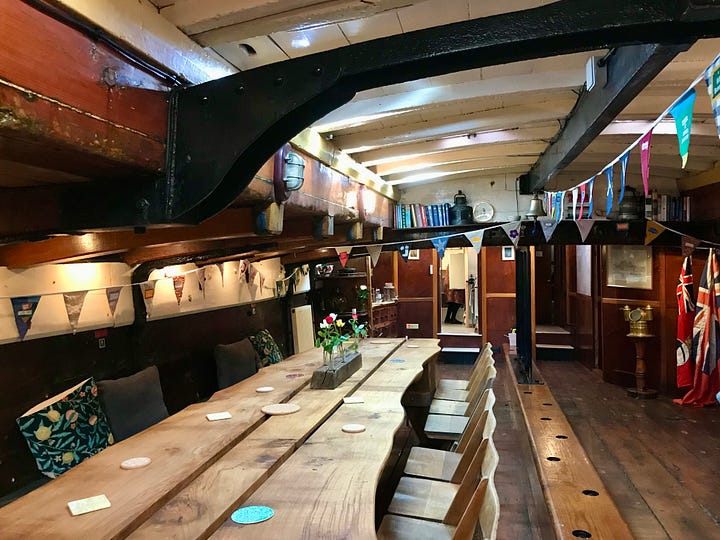
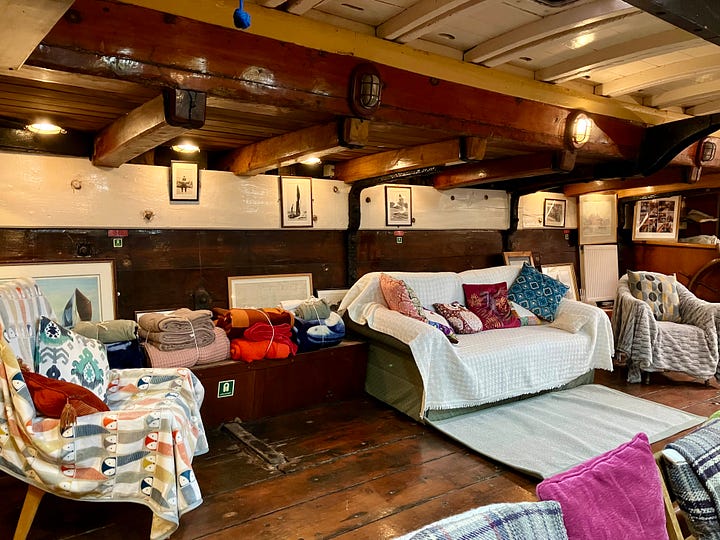
The project's name even alludes to the comfort it aims to provide to those who step aboard. In the United States, the term Bread and Roses often evokes images of the famous suffragette Helen Todd. For Harman, the title The Bread and Roses Barge holds a double significance.
“‘Bread’ represents the connection to May being a grain-carrying barge, while ‘roses’ symbolize the women who, with support, friendship, care, and love, can grow and blossom, just like a rose.”
Now, however, it’s time to realize the larger vision for their organization and the future of the Sailing Barge May. The first step in that plan, creating an onboard bakery.


While boats and bread may seem like an unlikely pairing, gluten is an integral part of The Bread and Roses Barge and May’s history.
Launched in 1891 by J&H Cann, S.B. May carried grain between Ipswich and London for the next 75 years. It was largely due to the water-tight necessity of her cargo — dry grain — that kept the boat in tip-top shape, enabling her to still be usable some 132 years later, now for the purpose of a below-deck bakery.
For The Bread and Roses Barge, the value of a bakery is twofold: first, as a community-building resource for women who want to come on board and bake, and secondly, as a means to financially support the project.
The act of making bread is therapeutic and community-oriented. “It’s an unusual but very basic means of communities coming together,” emphasizes Harman. “Bread making, especially sourdough baking, requires care, love, and nurturing to be at its best.” These principles also serve as the pillars of Harman and her co-founders' philosophy when engaging with women onboard May.
As a community interest company, The Bread and Roses Barge can accept donations and grants, while also offering services to further their mission, in this case baked goods.
The bakery renovation is one step in the larger scaffold of The Bread and Roses Barge’s plan. As Harman points out, “The goal is to save her; to get her rebuilt so she can sail again.”
Melding past and present, the final objective is to revive S.B. May's historical trading route along the Thames. While the barge is still delivering grain — albeit in a different, cooked form — it is also delivering perhaps a more important message: that the future of sailing barges not only includes women but actively seeks to support them.
“We want a full crew onboard, including women, to sail her regularly to her visiting ports; 6 ports over 6 weeks then back again and again for 11 months of the year. To bring bread to each harbor for people to collect. To invite groups and organizations that support vulnerable women to regularly come aboard to bake bread, build friendships, and gain support,” says Harman.
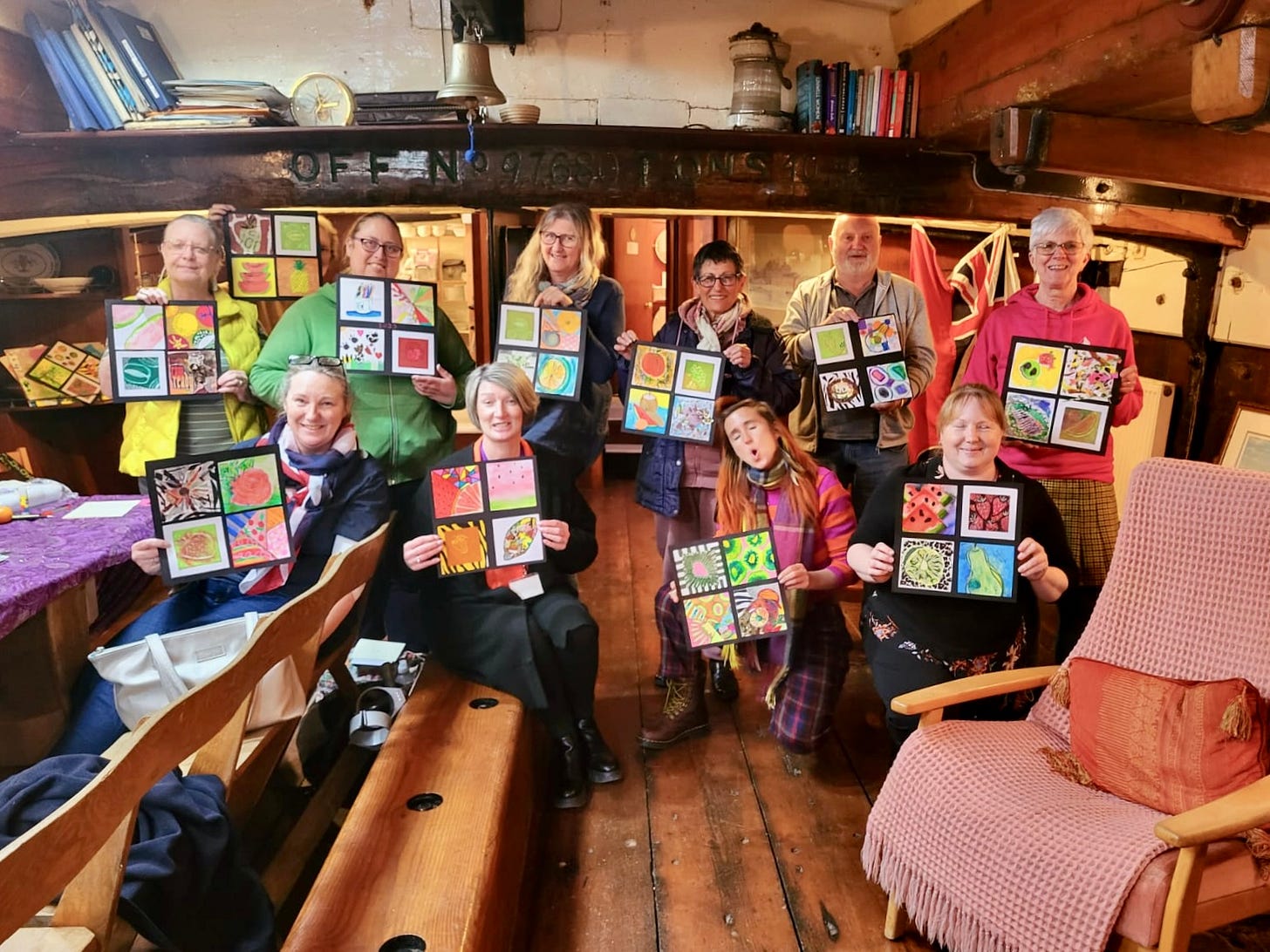
As aging ships disappear or find themselves enshrined in museums as relics of the past, we must consider what is lost. In a world where community spaces dwindle, we must ask ourselves what opportunities we forfeit when we don't utilize our pre-existing resources in a more imaginative way—in this instance, ships.
Through the preservation of vessels like May, we have the opportunity not only to safeguard maritime heritage but also to nurture and expand communities, particularly those that have long been marginalized. This endeavor is not just about salvaging relics; it's about cultivating thriving, inclusive spaces that honor the past while forging a brighter future.
In this respect, the mission of The Bread and Roses Barge is straightforward: “To build a community barge for the community.”
By establishing an onboard space for women, Harman, Gadd, and Swift lead us into a new chapter in maritime history—one that is more inclusive and caring; one that, much like the bread they bake, demands careful attention, respect, and a touch of creativity.
To learn more about The Bread and Roses Barge, visit their website here. If you would like to donate to their cause, please click the button below.





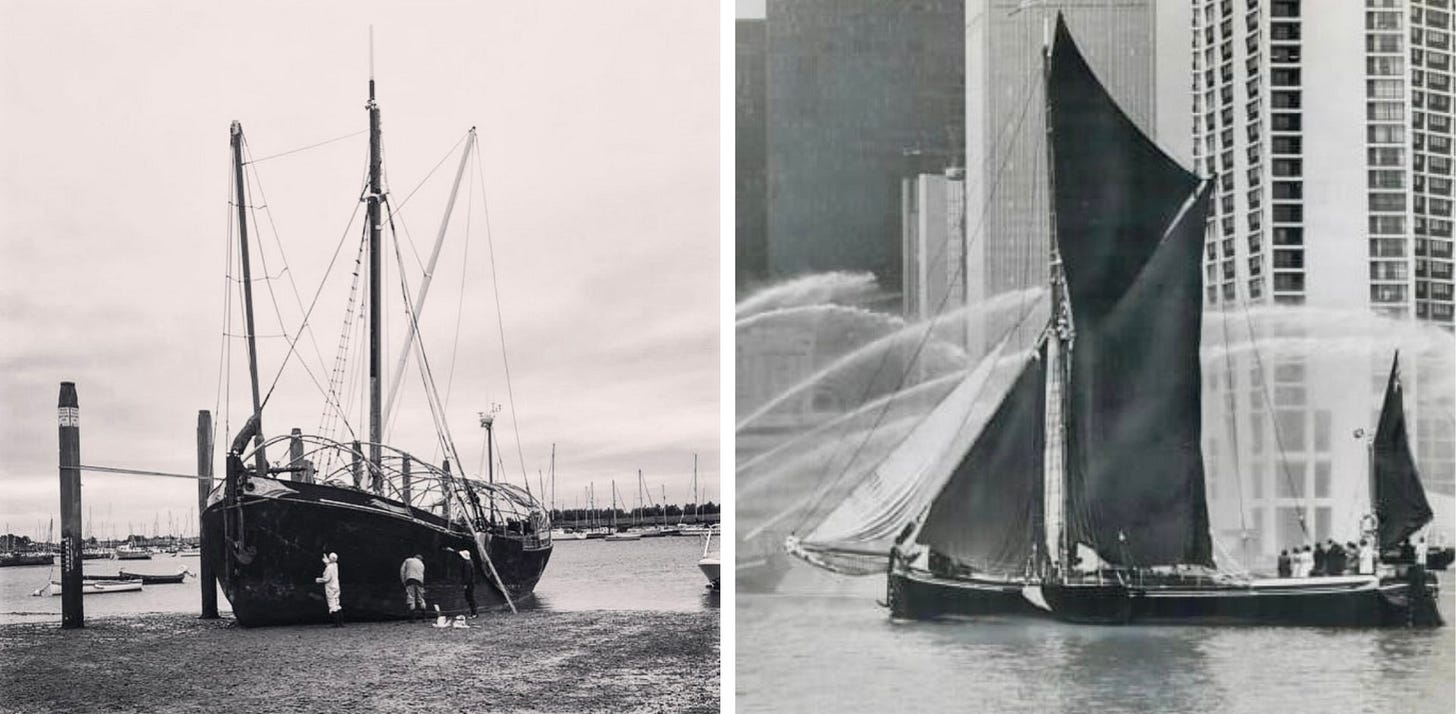
First of all, what a unique space for women to gather, and so cozy and welcoming too. Such an interesting project, both in its renovation and its outreach/mission.